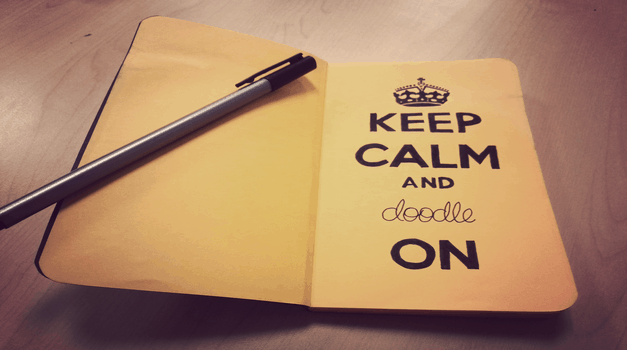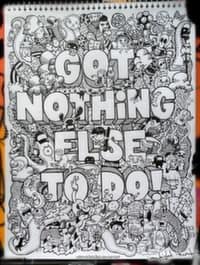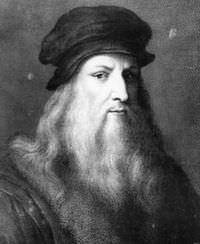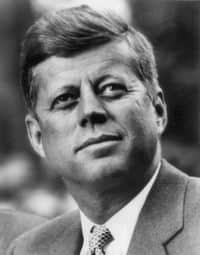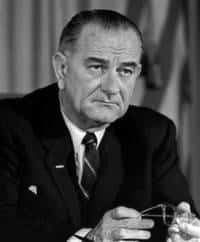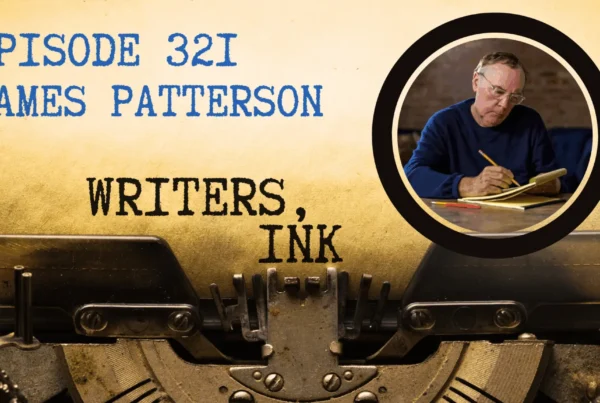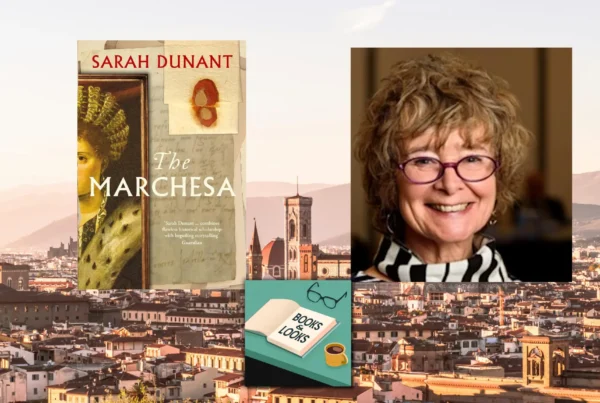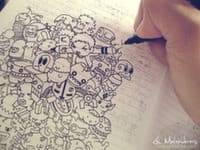 I knew from a very young age that I was a doodler—in fact, I was a repeat offender. Any time that I had to focus in class, my pen would instantly begin to move across the margins of my three-ring notebook: a flourish of spirals here, a cascade of words and phrases there. It didn’t matter what I drew; it always helped me take in whatever was going on around me. I usually doodled random words or nature scenes but I never really considered why I chose the doodles I did. To this day, I still doodle during work meetings. My mother is also a chronic doodler. Every time she is on a phone call that requires concentration—or even just a casual chat—she will begin to doodle on a piece of paper. Symbols, letters, and scribbles flow from her brain to the page, a secret code that she stores away so she can later decipher what she heard.
I knew from a very young age that I was a doodler—in fact, I was a repeat offender. Any time that I had to focus in class, my pen would instantly begin to move across the margins of my three-ring notebook: a flourish of spirals here, a cascade of words and phrases there. It didn’t matter what I drew; it always helped me take in whatever was going on around me. I usually doodled random words or nature scenes but I never really considered why I chose the doodles I did. To this day, I still doodle during work meetings. My mother is also a chronic doodler. Every time she is on a phone call that requires concentration—or even just a casual chat—she will begin to doodle on a piece of paper. Symbols, letters, and scribbles flow from her brain to the page, a secret code that she stores away so she can later decipher what she heard.
 In her new book, The Doodle Revolution: Unlock the Power to Think Differently (Portfolio, January), Sunni Brown says that we all have “inherent doodler DNA.” In fact, she has categorized doodles into five different types, claiming that you can be a combination of some or even all of them. Brown also explains how each different doodle can help you out in your work environment.
In her new book, The Doodle Revolution: Unlock the Power to Think Differently (Portfolio, January), Sunni Brown says that we all have “inherent doodler DNA.” In fact, she has categorized doodles into five different types, claiming that you can be a combination of some or even all of them. Brown also explains how each different doodle can help you out in your work environment.
Here are the five types of doodles and what they mean:
Abstract
By drawing abstract doodles, you can disconnect from linear concepts and shift to more organic thinking. Geometric patterns or meandering doodles will help you clear your mind and move toward a more associative thought process.
Nature/Landscapes
Some people (like me) doodle nature-inspired scenes such as rivers, mountains, flowers, wind, and energy. Drawing images from nature eases the mind and boosts concentration. You can challenge your mind by drawing more complicated natural processes such as photosynthesis.
My mother loves to write words or phrases and then trace them. The actual meaning of the word is generally unimportant. It is more so the physical act that allows the mind to more fully engage in the task at hand. Brown says that the biggest benefit of doodling words is the growing familiarity with letter shapes because it encourages innovation.
People and Places
Creating spontaneous cartoons aids in information processing. Doodlers who are able to portray emotion in simple drawings are great at discerning customer experience and behavior.
Pictures
These doodlers draw recognizable images of objects like tools, machinery and vehicles. The ability to render these realistic images is beneficial in business settings.
And here are some famous doodlers from history:
John Keats
This famous Romantic poet (and physician) liked to draw flowers in his medical notes.
Leonardo da Vinci
Da Vinci scribbled thousands of drawings and thoughts, which later influenced his helicopter and hydraulic pump designs.
John F. Kennedy
When he wasn’t running the country, our 35th president was a doodler of yachts!
Lyndon B. Johnson
JFK’s successor loved to draw people and faces.
Ron Howard
This film director extraordinaire draws abstract doodles to clear his mind before drafting storyboards.
Now that you’ve learned the 5 types of doodles, what type are YOU?
Image Credits:
http://suffiyan.com/blog/2012/
http://dont-touch-the-paint.
http://www.2dots-era.com/2011/
https://en.wikipedia.org/wiki/John_Keats
http://www.huffingtonpost.com/ross-king/da-vinci-book_b_2083835.html
https://sv.wikipedia.org/wiki/John_F._Kennedy
http://pbsthisdayinhistory.tumblr.com/post/39657222768/todayinhistory-january-4th-1965-lbj-announces
http://www.biography.com/people/ron-howard-9542185
